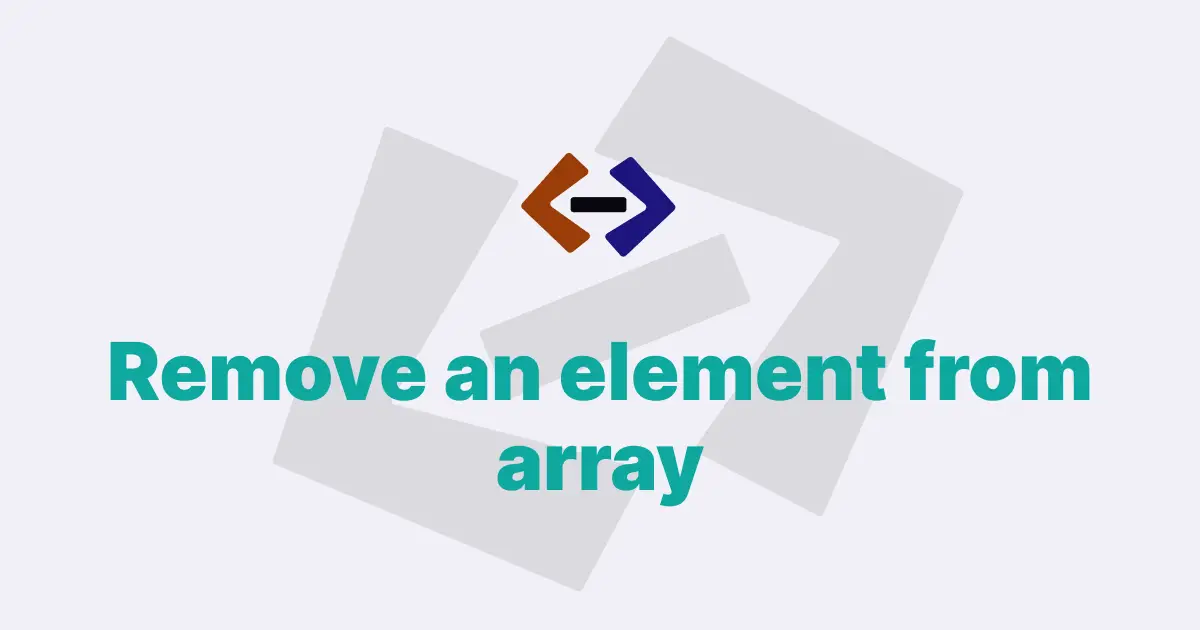In JavaScript, arrays are a commonly used data structure. Arrays can be used to store collections of data in a sequential manner, which makes it easier to access and manipulate the data. Sometimes, we need to remove the first element of an array for various reasons, such as reorganizing the data, modifying the array, or deleting unwanted data.
In this article, we will discuss how to remove the first element of an array in JavaScript.
There are several ways to remove the first element of an array in JavaScript.
Method 1: Using the shift() method:
The shift() method is a built-in method in JavaScript that removes the first element from an array and returns that element. The remaining elements in the array are shifted down to fill the gap.
Here is an example code snippet that demonstrates the use of the shift() method:
let arr = [1, 2, 3, 4, 5];
let removedElement = arr.shift();
console.log(removedElement); // Output: 1
console.log(arr); // Output: [2, 3, 4, 5]In the above code snippet, we have defined an array arr with some elements. We have then used the shift() method to remove the first element from the array and store it in the variable removedElement. We have then logged the removed element and the modified array to the console.
Method 2: Using the splice() method:
The splice() method is another built-in method in JavaScript that can be used to remove elements from an array. The splice() method can be used to remove a range of elements from an array, starting at a specified index.
Here is an example code snippet that demonstrates the use of the splice() method:
let arr = [1, 2, 3, 4, 5];
arr.splice(0, 1);
console.log(arr); // Output: [2, 3, 4, 5]In the above code snippet, we have defined an array arr with some elements. We have then used the splice() method to remove the first element from the array. The first argument to the splice() method is the index at which to start removing elements, and the second argument is the number of elements to remove. In this case, we are starting at index 0 and removing 1 element.
Method 3: Using the slice() method:
The slice() method is another built-in method in JavaScript that can be used to remove elements from an array. The slice() method can be used to create a new array that contains a range of elements from an existing array.
Here is an example code snippet that demonstrates the use of the slice() method:
let arr = [1, 2, 3, 4, 5];
arr = arr.slice(1);
console.log(arr); // Output: [2, 3, 4, 5]In the above code snippet, we have defined an array arr with some elements. We have then used the slice() method to create a new array that contains all the elements from the original array except for the first element. The first argument to the slice() method is the index at which to start copying elements, and since we want to remove the first element, we have specified an index of 1.
Method 4: Using the destructuring assignment syntax:
The destructuring assignment syntax is a feature introduced in ES6 that allows us to extract values from arrays and objects and assign them to variables. We can use the destructuring assignment syntax to remove the first element from an array.
Here is an example code snippet that demonstrates the use of the destructuring assignment syntax:
let arr = [1, 2, 3, 4, 5];
let [first, ...rest] = arr;
console.log(first); // Output: 1
console.log(rest); // Output: [2, 3, 4, 5]In the above code snippet, we have defined an array arr with some elements. We have then used the destructuring assignment syntax to assign the first element of the array to the variable first and the rest of the elements to the variable rest. Since we only want to remove the first element, we have assigned it to the variable first and discarded it.
Method 5: Using the filter() method:
The filter() method is another built-in method in JavaScript that can be used to remove elements from an array. The filter() method creates a new array that contains all the elements that pass a certain test. We can use the filter() method to create a new array that contains all the elements from the original array except for the first element.
Here is an example code snippet that demonstrates the use of the filter() method:
let arr = [1, 2, 3, 4, 5];
arr = arr.filter((element, index) => index !== 0);
console.log(arr); // Output: [2, 3, 4, 5]In the above code snippet, we have defined an array arr with some elements. We have then used the filter() method to create a new array that contains all the elements from the original array except for the first element. The filter() method takes a callback function that is called for each element in the array. The callback function takes two arguments: the current element and its index in the array. In this case, we have used the index to exclude the first element from the new array.
Thank you for reading, and let’s have conversation with each other
Thank you for reading my article. Let’s have conversation on Twitter and LinkedIn by connecting.


